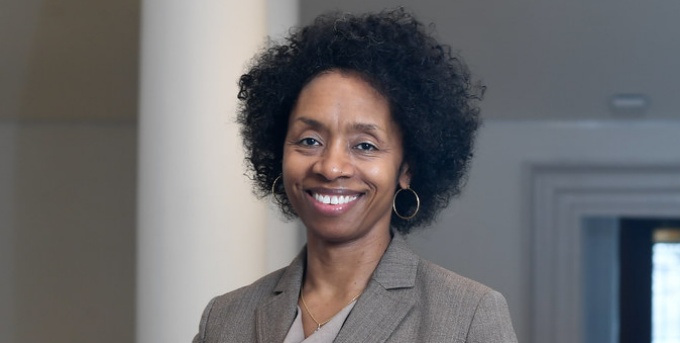
Serving and protecting
When a crime is committed, the justice system takes on the interests of a range of people: the convicted, the victims and their families, and the safety of the public.
Over her career, Tina Palmer Stanford ’90 has looked out for all of them.
In 14 years as an assistant Erie County district attorney, she negotiated and prosecuted thousands of cases, ranging from domestic violence, sexual assault and homicide and represented the county in appeals. “I’m old enough to remember John Wayne, and I always felt I was wearing the white hat,” she says.
Stanford was subsequently recruited to head the New York State Crime Victims Board (later the Office of Victim Services), which compensates those who have been victimized and advocates for their rights in the judicial process. For example, advocates can help victims get out of a violent home, or replace lost earnings, or help with burial expenses. For the first two of her six years there, she commuted weekly from Buffalo to Albany.
But she was committed to the people they served. “As an ADA, I learned a lot about what many crime victims want,” she says. “The most important thing is that you’re hearing their story and believing it and guiding them through the system. Sometimes they just want to be able to sit in court and stare at the person who harmed them. If you’re honest with people, and you let them know the strength of the case and make them partners in the process, then they’ll be satisfied with whatever outcome.”
She went on to chair the New York State Board of Parole, a position she held for over nine years before recently retiring. In that role, Stanford balanced public safety with the fate of incarcerated individuals seeking release back into society. Her former agency’s commissioners meet as panels of two or three, conduct extensive interviews with incarcerated individuals eligible for parole consideration, and render their decisions based on a carefully parsed set of criteria under state executive law.
No one takes the task lightly. “It’s not just what’s best for the victim, it’s not just what’s best for the incarcerated person, or that person’s family, or the rest of the general public who are impacted by those groups,” she says. “We’re trying to take all of those members of society into account and determine what’s in their best interest collectively and make those very delicate decisions based on the standards in the law.”
Sometimes the answer is no, but sometimes it’s yes—and that can be a turning point in a convicted person’s life. “One of the things that kept me going,” she says, “is learning that there are people who have earned their release, they’ve shown themselves worthy of that trust and that faith.”
It’s not unusual for the commissioners to receive thank-you notes from the formerly incarcerated, Stanford says; she often shared them during board meetings. “One man in his late 50s, who had spent his entire adult life incarcerated, sent me photos of him in his first car, at his desk at work, with his mom, with his wife in their house,” she recounts. “It can be very rewarding. We’re making a difference in people’s lives.”
And even those who have committed the worst crimes, Stanford says, have the legal right to make their case before a parole board. It’s a basic assumption of the judicial system that rehabilitation is possible, that the convicted deserve a chance to prove that they’ve become better people and that they pose no further danger to society.
“That person still has to be seen each and every time with the possibility of parole,” Stanford says. “Endless punishment isn’t the goal.”